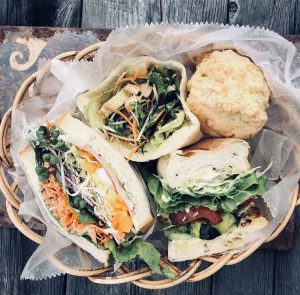When I first came to Japan, I would ride my bicycle up a long river path, past calm waters with ducks, small fish, and blue herons. In all of that natural beauty, my eyes would often be distracted by the stones on the bank of the river. Not just any stones, but oddly-shaped stacked four, five, or sometimes six stones high. This custom of methodically stacking stones was the inspiration for one of Nara’s most original products, the “tumi-isi”.
Designed and manufactured in Nara’s Higashi Yoshino Village, Tumi-Isi are pieces of wood cut into random shapes that you can stack like those stones.  Though every piece is different in shape and size, they have a variety of flat surfaces that make them a little easier to stack. Part of the beauty of Tumi-Isi is that there is no correct way to use them or play with them. Adults find themselves unable to stop trying to stack them in different combination, and children find even more creative ways of using them. For me, it’s a nice break from staring at a screen and checking my mail. It is a chance to re-connect with myself and unwind after a long day. Since they’re so fun and relaxing, I often see them in cafes, restaurants, and bookshops for customers to use as they like.
Though every piece is different in shape and size, they have a variety of flat surfaces that make them a little easier to stack. Part of the beauty of Tumi-Isi is that there is no correct way to use them or play with them. Adults find themselves unable to stop trying to stack them in different combination, and children find even more creative ways of using them. For me, it’s a nice break from staring at a screen and checking my mail. It is a chance to re-connect with myself and unwind after a long day. Since they’re so fun and relaxing, I often see them in cafes, restaurants, and bookshops for customers to use as they like.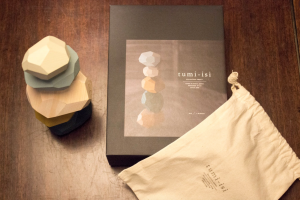 Tumi-Isi are made by local woodworkers using local Yoshino wood, a tribute to the forestry industry that has continued in this region for over 500 years. In these stressful times, taking a few moments and stacking stones can be very relaxing. If you’re stuck at home and can’t come to Nara, Tumi-Isi are a small piece of Nara that you and your close ones can hold in your hands.
Tumi-Isi are made by local woodworkers using local Yoshino wood, a tribute to the forestry industry that has continued in this region for over 500 years. In these stressful times, taking a few moments and stacking stones can be very relaxing. If you’re stuck at home and can’t come to Nara, Tumi-Isi are a small piece of Nara that you and your close ones can hold in your hands.
If you’re interested, be sure to check out their official store, and there are many imitation products with a similar name around the world.

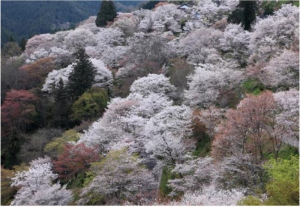 While Yoshino is a beautiful area throughout the entire year, it is perhaps most famous for its cherry blossoms that bloom every spring on Mt. Yoshino. There are so many that it feels like a fantasy world. As we climb up and down paths surrounded by these flowers, a cool breeze might blow a wave of petals off the branches and around our heads. As we climb higher, we might get a great view of the flowers and trees on the mountains around us as well, which always makes me feel like I am walking through the clouds.
While Yoshino is a beautiful area throughout the entire year, it is perhaps most famous for its cherry blossoms that bloom every spring on Mt. Yoshino. There are so many that it feels like a fantasy world. As we climb up and down paths surrounded by these flowers, a cool breeze might blow a wave of petals off the branches and around our heads. As we climb higher, we might get a great view of the flowers and trees on the mountains around us as well, which always makes me feel like I am walking through the clouds.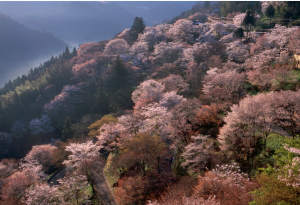
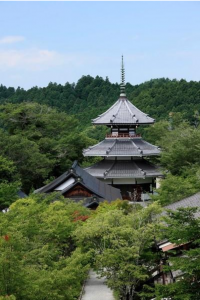
 The first of March marked the beginning of amago fishing season in many of the mountain streams of Japan. Amago, or “red-spotted masu trout” are a specialty of mountain streams. Though they stand out with their distinctive red spots and pretty blue and silver colors, they are a very defensive fish, and love to hide in deep areas crowded with rocks. Fisherman have to climb pretty far up the tributaries, to the hard to reach places just to be in the right area. Once they are there, they have to be careful not to be seen or heard by these clever fish, as they will swim away at first sight.
The first of March marked the beginning of amago fishing season in many of the mountain streams of Japan. Amago, or “red-spotted masu trout” are a specialty of mountain streams. Though they stand out with their distinctive red spots and pretty blue and silver colors, they are a very defensive fish, and love to hide in deep areas crowded with rocks. Fisherman have to climb pretty far up the tributaries, to the hard to reach places just to be in the right area. Once they are there, they have to be careful not to be seen or heard by these clever fish, as they will swim away at first sight.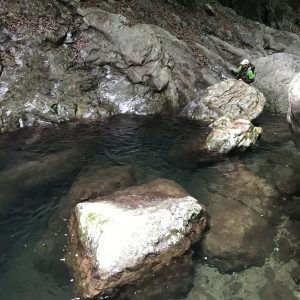 In Japanese, amago are nicknamed the “queens of the freshwater streams”, but that doesn’t stop people from enjoying their delicious taste. Salting and barbecuing them on skewers is the most common way of eating them, but the locals have many other delicious ways of bringing the unique flavor of amago. Their name comes from the word “ame-go”, which some older people still call them. “Ame” means rain, and the “ame-go” name came from how there were always so many of these fish during the rainy months of May and June.
In Japanese, amago are nicknamed the “queens of the freshwater streams”, but that doesn’t stop people from enjoying their delicious taste. Salting and barbecuing them on skewers is the most common way of eating them, but the locals have many other delicious ways of bringing the unique flavor of amago. Their name comes from the word “ame-go”, which some older people still call them. “Ame” means rain, and the “ame-go” name came from how there were always so many of these fish during the rainy months of May and June.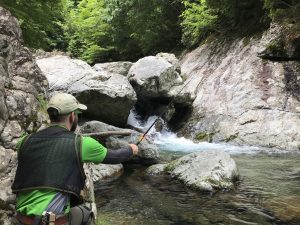
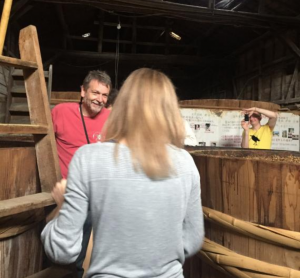
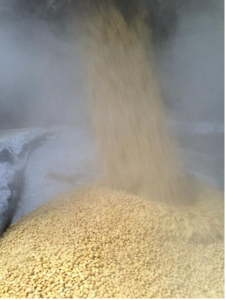
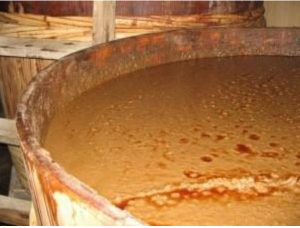
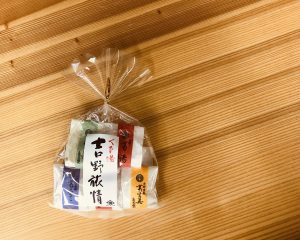
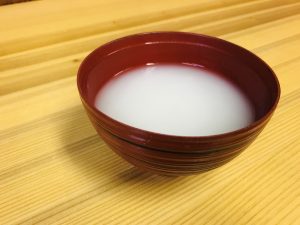
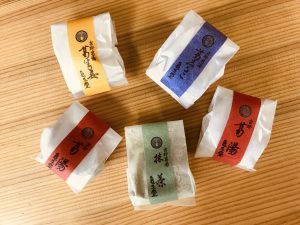
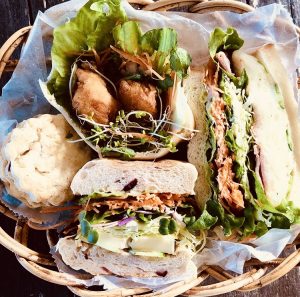 Just a short walk from both Kintetsu Nara Station and JR Nara Station, the area of Naramachi is known for its many traditional machiya-style buildings, narrow streets, and the calm air of the olden days. However, along these streets and within these buildings, there are very many new, creative, and fun places that add brilliant shades of color to what is already a beautiful town. One of those places is Mia’s Bread.
Just a short walk from both Kintetsu Nara Station and JR Nara Station, the area of Naramachi is known for its many traditional machiya-style buildings, narrow streets, and the calm air of the olden days. However, along these streets and within these buildings, there are very many new, creative, and fun places that add brilliant shades of color to what is already a beautiful town. One of those places is Mia’s Bread.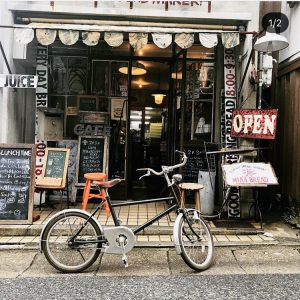 Just like how visitors who want a genuine experience of Japan will come all the way to Nara, locals who want genuine bread come to Mia’s Bread. With high-quality ingredients popular among the health conscious, this shop offers a wide range of breads, from loaves to bagels to pitas to baguettes to sandwiches. The sandwiches are jam-packed with vibrant vegetables, with the greens, pinks, yellows, and oranges catching anyone’s eye. The soups and salads are also very popular, which is evident by the need of a reservation for people who wish to have lunch there. With so many delicious flavors and aromas, brilliant shades of color, superbly textured breads, and local conversation, Mia’s Bread is a place we can take our time and enjoy with our five senses.
Just like how visitors who want a genuine experience of Japan will come all the way to Nara, locals who want genuine bread come to Mia’s Bread. With high-quality ingredients popular among the health conscious, this shop offers a wide range of breads, from loaves to bagels to pitas to baguettes to sandwiches. The sandwiches are jam-packed with vibrant vegetables, with the greens, pinks, yellows, and oranges catching anyone’s eye. The soups and salads are also very popular, which is evident by the need of a reservation for people who wish to have lunch there. With so many delicious flavors and aromas, brilliant shades of color, superbly textured breads, and local conversation, Mia’s Bread is a place we can take our time and enjoy with our five senses. There are many delicious and traditional foods in Naramachi, and I of course recommend those as well. However, if you’ve had enough rice or noodles or mochi on this trip, I suggest taking a page from the locals, and checking out this delicious bread shop.
There are many delicious and traditional foods in Naramachi, and I of course recommend those as well. However, if you’ve had enough rice or noodles or mochi on this trip, I suggest taking a page from the locals, and checking out this delicious bread shop. 